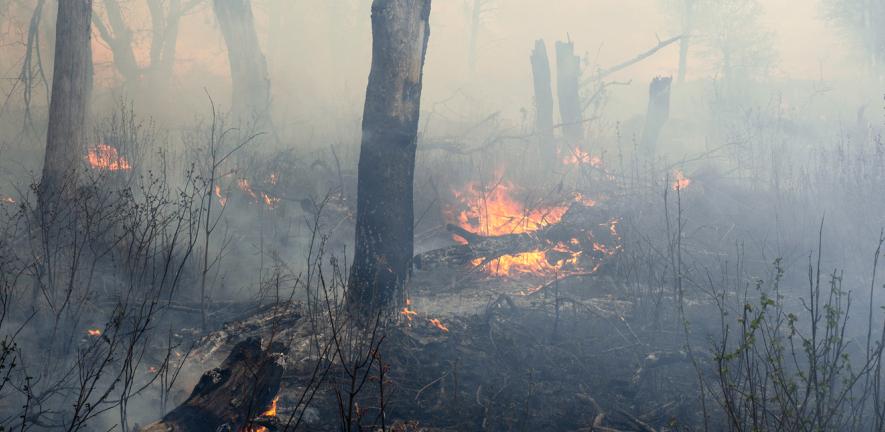
source: www.cam.ac.uk
Savannas and grasslands in drier climates around the world store more carbon than scientists previously thought and are helping to slow the rate of climate warming, according to a new study.
Because drier savannas are more sensitive to changes in fires, the decreases in burned area in those ecosystems has resulted in soils storing more carbon than they are releasingAdam Pellegrini
The study estimates that soils in savanna-grassland regions worldwide have gained 640 million metric tons of stored carbon over the past two decades.
This is because over the last 20 years, fire suppression has led to smaller wildfires, and less burned area in drier savannas and grasslands.
When soil microbes break down fallen leaves, dead plant matter and roots, the carbon in this plant biomass is released and can associate with minerals in the soil to become very stable. But the energy of an intense fire can burn it back off, releasing carbon dioxide into the atmosphere.
Fires are being suppressed because of population expansion, and landscape fragmentation caused by the introduction of roads, croplands and pastures in savannas and grasslands.
The study, published today in the journal Nature Climate Change, is based on a reanalysis of datasets from 53 long-term fire-manipulation experiments worldwide, as well as field-sampling at six of those sites.
“We found that the potential – at very high fire frequencies – to release soil carbon into the atmosphere as carbon dioxide is greatest in dry areas. The potential to store carbon in soil when fires are less frequent is also the greatest in these dry areas,” said Dr Adam Pellegrini in the Department of Plant Sciences at the University of Cambridge, and lead author of the study.
The reduction in the size and frequency of wildfires in dryland savannas has led to an estimated 23% increase in carbon stored in topsoil. This increase was not foreseen by most of the state-of-the-art ecosystem models used by climate researchers. As a result, the researchers say, the climate-buffering impacts of dryland savannas are likely to have been underestimated.
Soil contains at least three times more organic carbon than the atmosphere or terrestrial plants, making it an important global carbon pool.
“Our findings show that because drier savannas are more sensitive to changes in fires, the decreases in burned area in those ecosystems has resulted in soils storing more carbon than they are releasing,” said Pellegrini.
He added: “Many of the ecosystem models that are used in simulating the effects of global change on carbon cycling are unlikely to have captured these dynamics.”
The study involved twenty researchers from institutions around the globe, who looked at recent changes in burned area and fire frequency in savannas, other grasslands, seasonal woodlands and forests.
Across 888,000 square miles (2.3 million square kilometers) of dryland savanna-grasslands, where fire frequency and burned area declined over the past two decades, soil carbon rose by an estimated 23%.
But in more humid savanna-grassland regions covering 533,000 square miles (1.38 million square kilometers), more frequent wildfires and increased burned area resulted in an estimated 25% loss in soil carbon over the past two decades.
The net change during that time was a gain of 0.64 petagrams, or 640 million metric tons, of soil carbon.
“In the past couple of decades, global savannas and grasslands have slowed climate warming more than they have accelerated it, despite fires. But there is absolutely no guarantee that this will continue in the future,” said Peter Reich, Director of the Institute for Global Change Biology at the University of Michigan, who was also involved in the study.
“No single region – from the Amazon rainforest, to the US Great Plains grasslands to Canada’s boreal forest – can alone store sufficient carbon to make a large contribution to slowing climate change. But together, they can,” said Pellegrini.
He added: “There are several savanna and grassland regions where soil carbon-credit projects are being developed, so understanding their capacity to sequester carbon is relevant to those regions.”
This research was funded by the U.S. Department of Agriculture, United Kingdom Research and Innovation (UKRI), the Gordon and Betty Moore Foundation, and the US Department of Energy.
Reference: Pellegrini, A.F.A, et al.: ‘Soil carbon storage capacity of drylands under altered fire regimes.’ Nature Climate Change, October 2023. DOI: 10.1038/s41558-023-01800-7
Adapted from a press release by the University of Michigan.
Learn more about Adam Pellegrini’s work.
The text in this work is licensed under a Creative Commons Attribution-NonCommercial-ShareAlike 4.0 International License. Images, including our videos, are Copyright ©University of Cambridge and licensors/contributors as identified. All rights reserved. We make our image and video content available in a number of ways – as here, on our main website under its Terms and conditions, and on a range of channels including social media that permit your use and sharing of our content under their respective Terms.